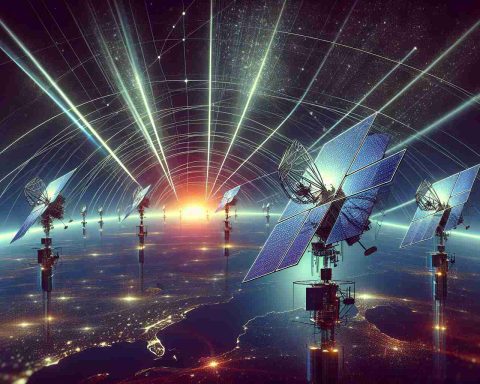- The moon will undergo a total lunar eclipse this week, transforming into a “blood moon” with red-orange hues.
- This phenomenon occurs when Earth is perfectly aligned between the sun and the moon, casting a shadow on the lunar surface.
- The best time to view the eclipse in Utah and nearby regions is just before 10 p.m. on Thursday, with peak visibility early Friday.
- Observers are advised to find viewing locations away from city lights to fully appreciate the eclipse’s subtle beauty.
- The blood moon serves as a reminder of Earth’s place in the universe, blending science with mystical, ancient traditions.
- This event provides a moment to marvel at the celestial mechanics and reconnect with the past, while contemplating the future.
- The blood moon is an opportunity to witness one of the sky’s most poetic wonders and ignite your imagination.
Earth and its cosmic companion, the moon, are poised to put on a spectacular show this week, drawing night owls and dreamers alike to gaze skyward. As Thursday evening unfolds into the stillness of night, the moon will slip gracefully into Earth’s shadow, transforming into a captivating shade of red-orange. This mesmerizing display, known as a “blood moon,” occurs during a total lunar eclipse when our planet interposes itself perfectly between the sun and the moon, casting its shadow across the lunar surface.
Imagine this: a serene corner of Earth bathed in the soft light of a million stars, with the blood moon hanging luminous and enigmatic overhead. The moon, typically a beacon of pale silvery light, adopts hues of copper and crimson as it delves into Earth’s umbral embrace. This shadow play is orchestrated by sunlight, scattered and refracted through Earth’s atmosphere, painting the moon with the colors of dawn and dusk.
For those in Utah and surrounding regions, the celestial choreography begins just before 10 p.m. on Thursday, reaching its peak brilliance as the clock pushes into the early hours of Friday. Whether perched on a mountaintop or lounging in a sprawling field, the optimal stage for viewing this astral performance is away from intrusive city lights, where the night can unfurl its full magic.
NASA recommends finding a locale removed from urban glare to truly appreciate the subtleties of the eclipse as it unfolds. In these quiet, dark places, the moon becomes more than a mere celestial body; it becomes a storyteller, recounting tales of ancient rituals and cosmic rhythms.
In this fleeting blend of science and mysticism, the blood moon serves as a vivid reminder of our place within the vast universe—a poignant confession of Earth’s own shadow narrated across the face of its oldest companion. Be a part of this astral congregation; let the moon’s fiery glow ignite your imagination and renew your sense of wonder at the grand celestial mechanics at play.
As you look up and marvel at this rare display, remember that the blood moon offers more than just a visual spectacle—it’s a chance to reconnect with the ancient and the infinite, a direct link to our past and an invitation to ponder the expanse of our future. Don’t miss this opportunity to witness one of the sky’s most poetic wonders.
Discover the Magic: Witnessing the Enigmatic Blood Moon
What Is a Blood Moon?
A blood moon occurs during a total lunar eclipse when the Earth positions itself directly between the sun and the moon. This celestial alignment causes the Earth to cast its shadow on the lunar surface, resulting in a captivating transformation of the moon’s color into shades of red and orange, popularly known as a “blood moon.”
Why Does a Blood Moon Turn Red?
The distinct crimson hue of a blood moon is caused by the scattering of sunlight in Earth’s atmosphere. As sunlight passes through the atmosphere, shorter blue wavelengths are scattered away, leaving the longer red wavelengths to be refracted and illuminate the moon. This effect is similar to the colors observed during sunrise and sunset.
Optimal Viewing Tips
– Choose the Right Location: To fully experience the blood moon’s beauty, find a location far from urban light pollution. Dark, open spaces such as fields or hilltops are ideal.
– Timing Is Key: In Utah and nearby areas, the celestial event starts just before 10 p.m. on Thursday and peaks into the early hours of Friday. Plan accordingly to catch the eclipse at its most vivid.
– Weather Check: Ensure favorable weather conditions with clear skies to view the eclipse unobstructed.
Real-World Use Cases
– Photography: Capture stunning photographs by setting up a tripod for stability. Use a telephoto lens to zoom in on the moon’s details during the eclipse.
– Astronomy Education: This event serves as an excellent opportunity for amateur astronomers and educators to spark interest and understanding in celestial phenomena.
– Cultural Reflection: Different cultures view lunar eclipses with varying symbolic meanings. Use the blood moon as a moment to explore these cultural narratives and their historic significance.
FAQs
Q: How often do total lunar eclipses occur?
Total lunar eclipses occur roughly every 2.5 years. However, the visibility of these events depends on your geographical location.
Q: Can the blood moon be harmful to view?
Unlike solar eclipses, viewing a lunar eclipse is completely safe for the eyes.
Pros and Cons Overview
Pros:
– Offers a rare and breathtaking visual spectacle.
– Promotes interest in astronomy and science.
– Can be observed safely without special equipment.
Cons:
– Weather conditions can obscure visibility.
– Light pollution can diminish the experience.
Industry Trends & Predictions
With the rise of interest in astronomy and space exploration, events like the blood moon are attracting more public and media attention. Future advancements in technology, such as augmented reality apps, may enhance public engagement by providing additional real-time information and simulations of astronomical events.
Quick Tips for Blood Moon Viewing
1. Use Binoculars: While not necessary, binoculars can enhance your view of the moon’s surface.
2. Photography Settings: Set your camera to a low ISO, a long exposure, and manual focus for sharp images of the moon.
3. Enjoy the Moment: Above all, take the time to simply appreciate the rarity and beauty of the event.









